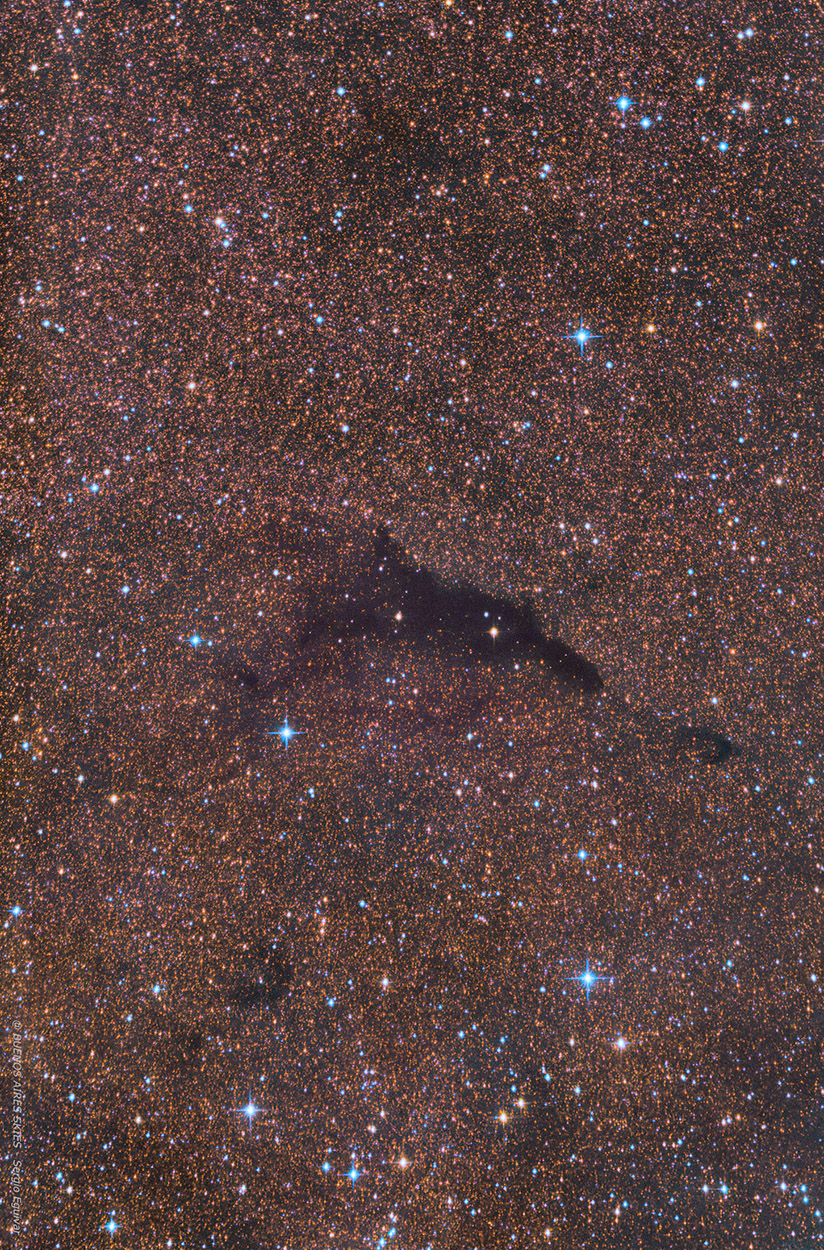
0222222222222222222222222222222222222222222222222222222.
| HOME |
BARNARD 252 / LDN 1698 (AKA THE DOLPHIN NEBULA)
DARK NEBULA IN SCORPIUS
(Image centered at: ra 17 h: 16 m / dec -32º 14')
CLICK THE IMAGE FOR A HIGH RESOLUTION VIEW
June 2025, Home Backyard in Martinez, Buenos Aires, Argentina
DATA
TYPE: DARK NEBULA
APPARENT DIMENSION: 20 X 5 arc minutes
APPARENT MAGNITUDE (V): NA
DISTANCE: 1,500 light years
IMAGE INFORMATION
INSTRUMENT: 6" ORION OPTICS UK (Ultra Grade Optics) w/Sky Watcher Coma Corrector (0.9x) working at at f4.5
CAMERA: QHY 183 MONO
MOUNT: SKYWATCHER NEQ6, OAG with QHY 5II Mono
FILTERS: OPTOLONG LRGB Set
SKY CONDITIONS: urban skies - Bortle 8
EXPOSURES: LRGB (45,45,45,45)
OBJECT DESCRIPTION AND IMAGE SESSION
Barnard 252 is a dark nebula, also known as an absorption nebula, and is located in the constellation Scorpius. It is a cloud of gas and dust that blocks light from stars behind it, making it appear as a dark patch against a brighter background. Barnard 252 is part of the larger Barnard 252-257 region.
Darks nebula or absorption nebulas are a type of interstellar cloud, particularly molecular clouds, that are so dense that it obscures the visible wavelengths of light from objects behind it, such as background stars and emission or reflection nebulae. The extinction of the light is caused by interstellar dust grains in the coldest, densest parts of molecular clouds. Clusters and large complexes of dark nebulae are associated with Giant Molecular Clouds. Isolated small dark nebulae are called Bok globules. Like other interstellar dust or material, the things it obscures are visible only using radio waves in radio astronomy or infrared in infrared astronomy.